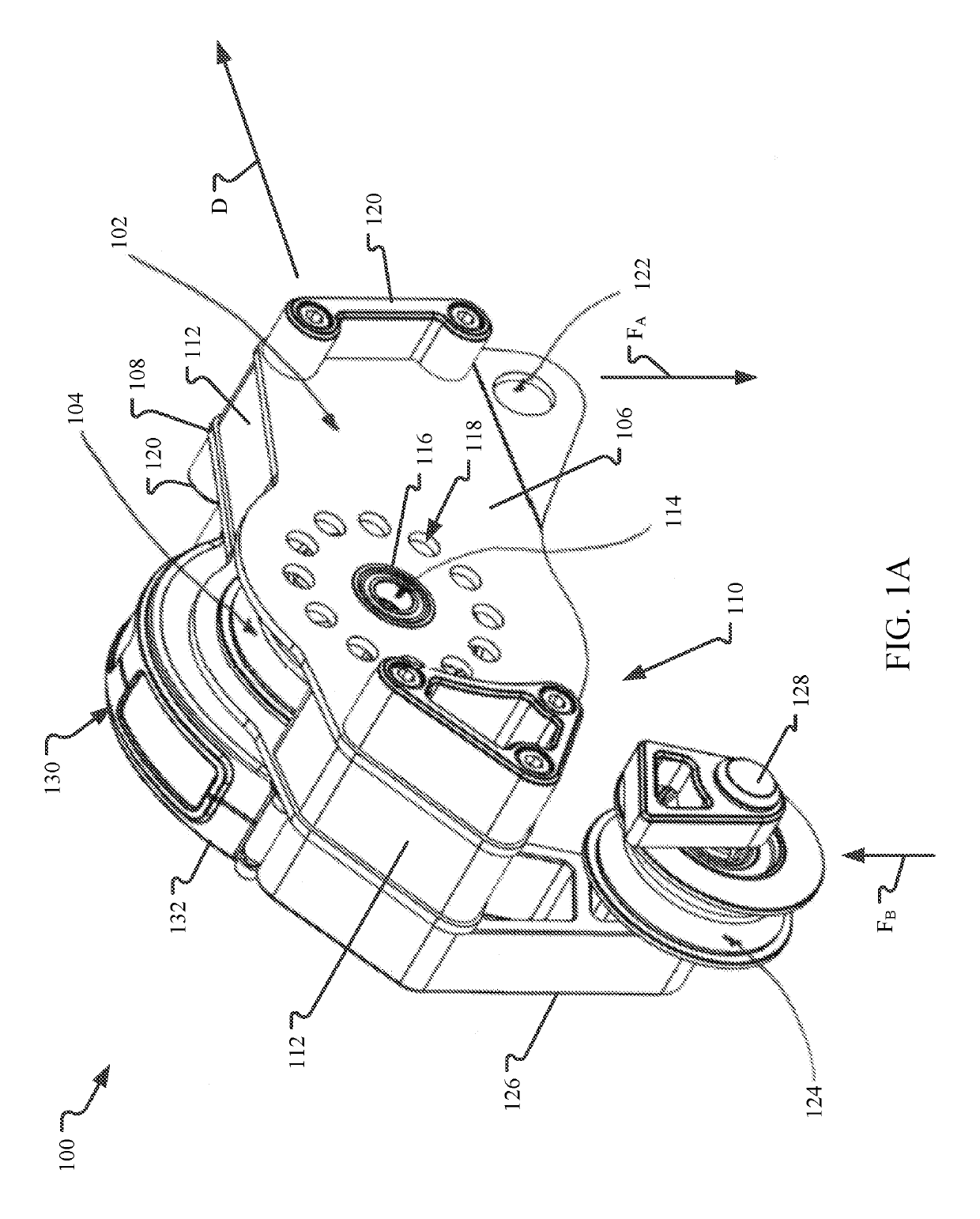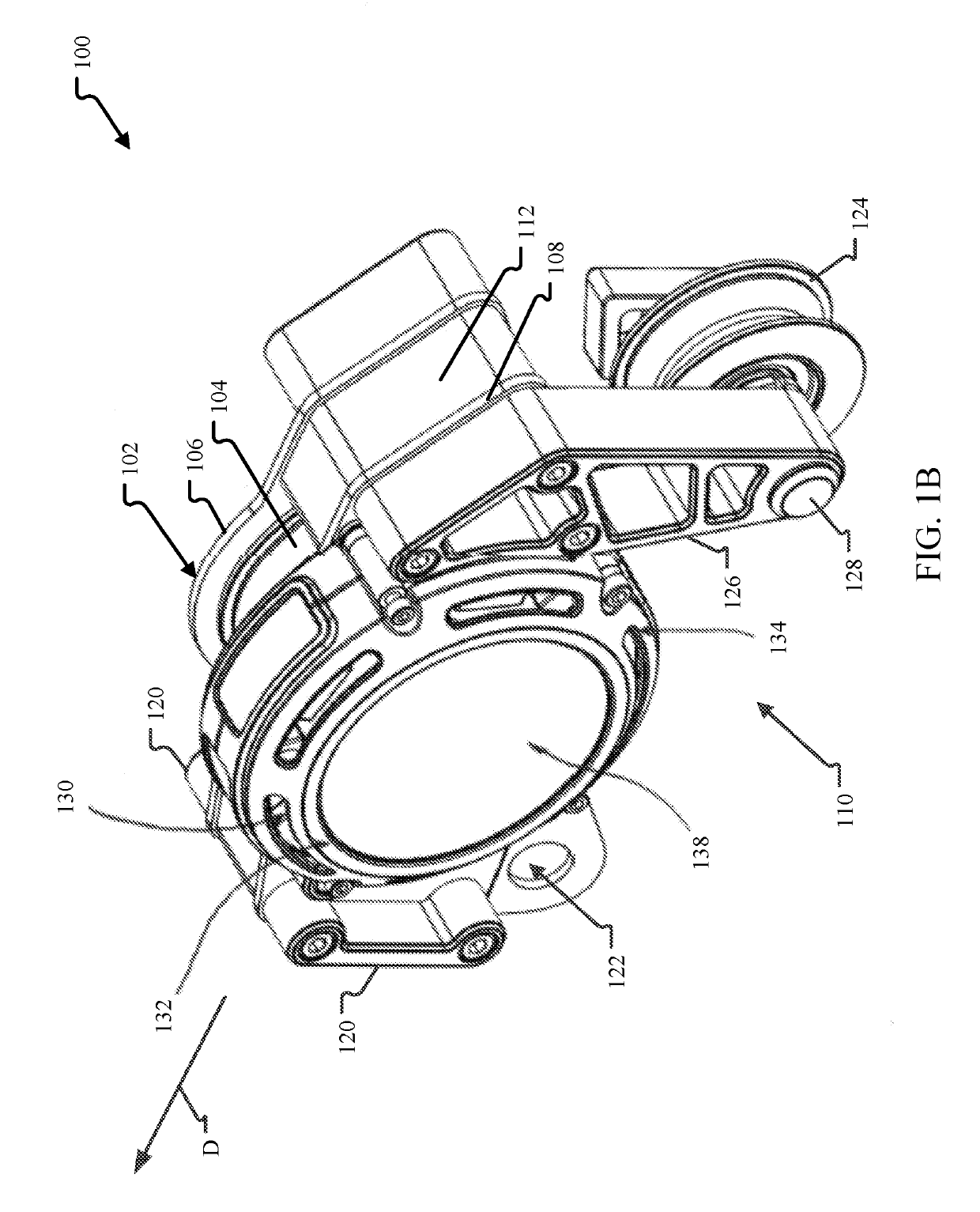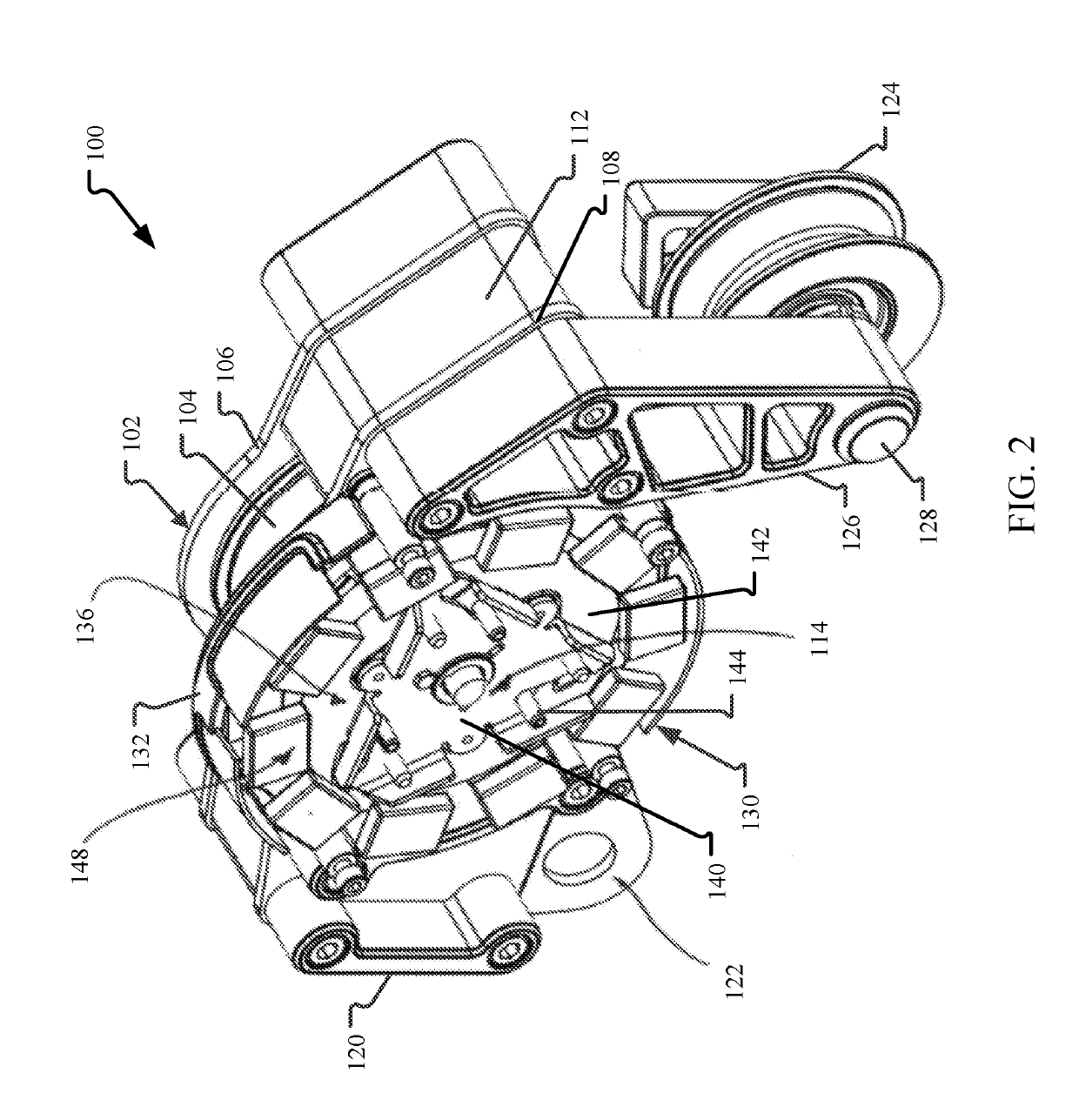Cable and structure traversing trolleys
a technology of cable and structure, which is applied in the direction of hoisting equipment, elevators, load-engaging elements, etc., can solve the problems of riders' injuries, damage to loads, and unwanted consequences
- Summary
- Abstract
- Description
- Claims
- Application Information
AI Technical Summary
Benefits of technology
Problems solved by technology
Method used
Image
Examples
Embodiment Construction
[0035]This disclosure describes examples of load carrying trolleys with eddy current braking mechanisms. In aspects, the eddy current braking mechanism is based at least in part on the centrifugal force generated by the rotation of one or more sheaves of the trolley as it traverses across the cable. These braking mechanisms enable for the resistance force generated by the braking mechanism to be dynamic (e.g., based at least partially on rotational speed) so that trolley speed along the cable is more constant across a wide variety of operating conditions (e.g., weight loads). In other aspects, the eddy current braking mechanism may generate a more constant resistance force so that the braking mechanism generates the same braking force for all trolleys and under all operating conditions. In either aspect, the trolley may include magnet and conductor configurations that increase the performance of the trolley. For example, a housing of the trolley may be formed as the conductive eleme...
PUM
 Login to View More
Login to View More Abstract
Description
Claims
Application Information
 Login to View More
Login to View More - R&D
- Intellectual Property
- Life Sciences
- Materials
- Tech Scout
- Unparalleled Data Quality
- Higher Quality Content
- 60% Fewer Hallucinations
Browse by: Latest US Patents, China's latest patents, Technical Efficacy Thesaurus, Application Domain, Technology Topic, Popular Technical Reports.
© 2025 PatSnap. All rights reserved.Legal|Privacy policy|Modern Slavery Act Transparency Statement|Sitemap|About US| Contact US: help@patsnap.com



